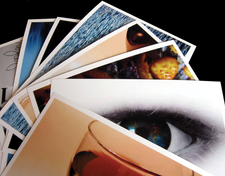Picasa 2.7 image manager
Memory Management

© makuba, Fotolia
In the age of the digital camera, users are overwhelmed by a flood of images. Picasa not only helps you manage photos but also will enhance the image quality with just a couple of mouse clicks.
Since digital cameras made it easy for users to shoot as many photos as they like without spending a fortune on processing and printing, many photographers have made excessive use of this option. The result is an enormous, jumbled collection of photos on home PCs. Google's Picasa [1] manages photos and also supports easy image editing.
Various add-on functions give users the ability to upload photos to web albums or photo labs and to create incremental image backups. With the press of a button, Picasa will create collages and contact prints or export selected photos or folders as HTML pages for uploading to the Internet.
As of this writing, Google does not offer a native Linux port of Picasa. Fortunately, the installer includes a customized Wine environment to ensure trouble-free launching of the program on Linux (Figure 1). I tested version 2.7 of the software.
[...]
Buy this article as PDF
(incl. VAT)
Buy Linux Magazine
Subscribe to our Linux Newsletters
Find Linux and Open Source Jobs
Subscribe to our ADMIN Newsletters
Support Our Work
Linux Magazine content is made possible with support from readers like you. Please consider contributing when you’ve found an article to be beneficial.

News
-
Parrot OS Switches to KDE Plasma Desktop
Yet another distro is making the move to the KDE Plasma desktop.
-
TUXEDO Announces Gemini 17
TUXEDO Computers has released the fourth generation of its Gemini laptop with plenty of updates.
-
Two New Distros Adopt Enlightenment
MX Moksha and AV Linux 25 join ranks with Bodhi Linux and embrace the Enlightenment desktop.
-
Solus Linux 4.8 Removes Python 2
Solus Linux 4.8 has been released with the latest Linux kernel, updated desktops, and a key removal.
-
Zorin OS 18 Hits over a Million Downloads
If you doubt Linux isn't gaining popularity, you only have to look at Zorin OS's download numbers.
-
TUXEDO Computers Scraps Snapdragon X1E-Based Laptop
Due to issues with a Snapdragon CPU, TUXEDO Computers has cancelled its plans to release a laptop based on this elite hardware.
-
Debian Unleashes Debian Libre Live
Debian Libre Live keeps your machine free of proprietary software.
-
Valve Announces Pending Release of Steam Machine
Shout it to the heavens: Steam Machine, powered by Linux, is set to arrive in 2026.
-
Happy Birthday, ADMIN Magazine!
ADMIN is celebrating its 15th anniversary with issue #90.
-
Another Linux Malware Discovered
Russian hackers use Hyper-V to hide malware within Linux virtual machines.

